
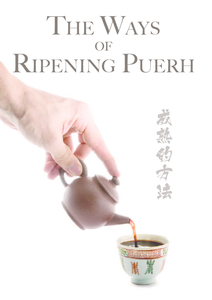 |
|

If we want to really deepen our understanding of puerh tea, we must be clear on one point - in fact, there are two different fermentation methods used for puerh: the older, traditional method of ripening puerh, which can be rightly called the true "shou (熟)" method, or "ripening," which is really just the natural aging of sheng tea (which is a ripening, after all), and the more modern method called "wo dui (渥堆)," or "heaping/piling," which is artificial fermentation. Most people tend to lump these two techniques together when discussing finished puerh tea, but we must separate them if we hope to understand puerh, and particulary, the differences in flavor and mouthfeel that these methods produce. There is a time when most beginners cannot taste the difference between naturally and artificially aged puerh, but with some practice, one can learn to tell them apart.
The real method of ripening puerh is to age sheng tea over time, and the original characteristics of the tea are influenced by the temperature and humidity of the storage environment; this may be caused by carelessness during the manufacturing process or the influence of storage conditions (caused either accidentally or deliberately in "traditional" or "wet" storage (濕倉) - mostly in Hong Kong). In the olden days, a newly-made tea cake was not actually made from freshly produced leaves the way they are today, but rather from tea leaves that are two to three years old, or even older. This is because none of these teas were for immediate consumption. Loose tea leaves degenerate and oxidize faster than compressed tea cakes, as they have a greater amount of surface area exposed to the air. (By comparison, two- to three-year-old tea cakes would take twice or three times as long as loose leaves of the same age to naturally mature and oxidize until the liquor achieves the desired bright, clear red.) This means that the teas that went into cakes were often already well on their way before they were even compressed.
One interesting experiment involved storing loose-leaf tea and compressed tea in the same place for three, six and nine years to compare the changes. The results are shown in the accompanying table. From these results, we can see that for those tea lovers who wish to drink their puerh quickly and aren't keen on the character of piled, or wo dui tea, a good alternative is to buy some loose-leaf sheng puerh and store it yourself. This way, you can drink it whenever you please, and over time you will get to experience the joy of "raising" puerh yourself. In compressed tea, on the other hand, the oxidation and post-production fermentation is slower, and puerh tea cakes enjoy a certain reputation in the market.
Because of this, many tea merchants seek to speed up the oxidation and breakdown of the tea, so they buy newly-made sheng or "raw" puerh and purposely store it in an environment that will speed up the aging process and allow it to oxidize/ferment more quickly. Tea stored under these circumstances confuses things, since it is technically "artificially fermented," just not in piles (wo dui). Such tea ages two to three times faster than quality tea that has been stored in a normal, "clean" environment, so in a sense this is "fake aging," though it is really more of a technique and shouldn't be regarded as a scam. When done well, such tea can be great, and should be evaluated by its own set of criteria. After being stored like this for one or two years, the tea is taken out of wet storage and returned to dry storage to "recover" and oxidize normally. The overall aim of this process is to shorten the aging time by stimulating chemical changes, using the dampness in the environment, transforming the pectic substances in the tea into theaflavins after the process of oxidation, polymerization and fermentation.

With the added influence of microorganisms, the theaflavins are soon transformed into thearubigins. At this point, the color of the tea will become darker, but the mouthfeel and Qi of the tea can't keep up, so it still won't have enough of an "aged" feel - and in comparison to slow-aged tea, will produce a potentially uncomfortable roughness in the mouth and throat. Tea stored in normal conditions would take four to six times longer to reach the same depth of color in the liquor (but one thing that cannot be changed is the original quality of the tea - aged tea will lack liveliness and freshness if the maocha used was not from a good source). The flavor of tea that has been stored in "wet" conditions for too long can be compared to that of fruit that has been soaked by rainwater - it lacks its original freshness and sweetness. If compressed tea is aged using this artificially sped-up method, it loses some of its original flavor, fragrance and quality and takes on a sort of "semi-ripe" quality. So, knowing a bit about this comparison can help us become more familiar with the world of fine puerh. Making nice "traditionally-stored" puerh is a skill that requires understanding when to move the tea from the wetter to drier environments.
Thus, we are left with three ways of ripening puerh tea: natural, slow aging; intentional aging; traditional/wet storage and piling (wo dui). Many people feel that tea will naturally become wellaged, vintage sheng tea if it is left for long enough, and that keeping sheng tea in hot, humid conditions will cause it to develop a more ripe flavor, which means that the latter two categories may be closer to each other than the first. In other words, wet-stored sheng may have more in common with piled shou tea than it does with slow-aged sheng.
The "heaping/piling" or wo dui process has been used since the early 1970s as a scientific method of controlling heat and humidity to speed up the transformation of puerh tea and reduce its bitterness and astringency. In the current sheng puerh craze, one might be tempted to think that wo dui tea is inferior, which isn't always the case. The heaping technique was considered a national treasure in 1973; it wasn't until the modern puerh craze took off in 1997 that some factories began piling without following the proper technique, which gave rise to the impression that some people have today, which is that shou puerh is inferior and tastes "pondy." There were a lot of well-known wo dui teas in the early days, including 7572 cakes, 7562 tea bricks, Xiaguan 7663 bowl-shaped tuocha, Jinggu bricks (often called "73 thick bricks"), Cultural Revolution bricks and 7582 bricks from the Kunming Tea Factory. These are all classic examples of the heaping technique done properly, and confirm that there are many good-quality wo dui teas, so long as the piling is done with skill and intention, which it rarely is these days.
When tasting wo dui tea, we could just as easily go from older to newer teas, or newer to older; but how does one tell whether a tea was made using the wo dui technique from before 1997 or the later techniques of fully fermenting the tea in deeper piles that sit for longer? It's quite simple: First, take a sniff. Early teas have a steady, aged fragrance, and the liquor is bright and clear in both color and flavor. Teas from after 1997 that have undergone full fermentation in large, deep piles leave you with an overall feeling of discomfort. They are rough and smell "pondy." You may smell some ammonia. After time, you will also learn to taste the piling, which isn't hard when it is done to such a heavy degree.
There's a saying that offers some good advice about appreciating puerh: "Smell a lot, ask a lot, drink a lot, look a lot, learn a lot and buy only a little!" Don't let yourself pre-judge the tea based on what you've heard, either; you must first relax and empty your mind before approaching the tea. After all, it's the person who appraises the tea, not the other way around! It's with this type of approach that we can bring meaning and culture to our tea drinking practice.

| Three Years | Six Years | Nine Years | ||||
| Loose-leaf | Compressed | Loose-leaf | Compressed | Loose-leaf | Compressed | |
| Proportion of gold in tea liquor | 70% | 95% | 55% | 85% | 45% | 75% |
| Proportion of red in tea liquor | 30% | 5% | 45% | 15% | 55% | 25% |
| Mouthfeel | Smoothness: 30% | Slight bitterness & astringency: 90% | Smoothness: 40% | Slight bitterness & astringency: 80% | Smoothness: 50% | Slight bitterness & astringency: 70% |
| Aroma | Aged aroma: 20% | Fresh & cool: 90% | Aged aroma: 30% | Fresh & cool: 80% | Aged aroma: 40% | Fresh & cool: 70% |
| Appearance of the brewed leaves | Dark green | Emerald green: 95% | Black-green | Emerald green: 85% | Slightly rosy | Emerald green: 75% |
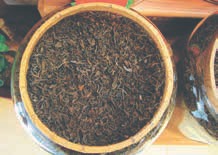
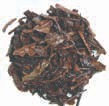
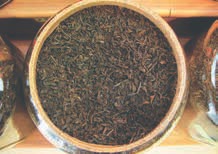
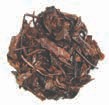
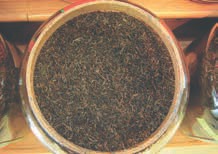
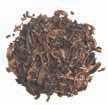

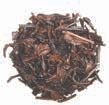
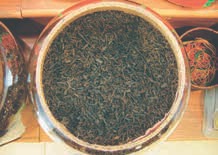
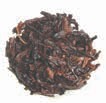
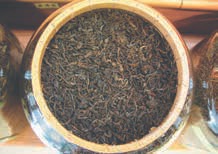
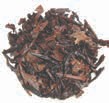
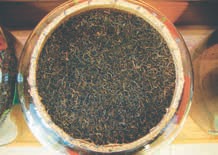
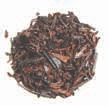
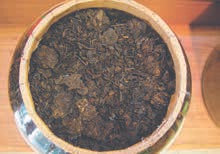
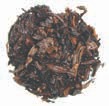
These samples show some of the early changes in sheng puerh, as well as two shou cakes blended together for comparison. Storing loose-leaf sheng is another way to "ripen" puerh tea, especially if we use the more traditional definition which is "to ferment," whether naturally or artificially. The increased surface area and oxygen ferments/ oxidizes the tea faster.